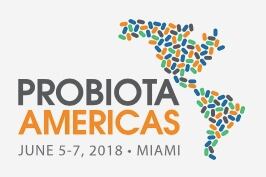Schieman, who is a research fellow at Harvard University, is a co founder of the firm Fitbiomics. Scheiman works there in the lab of influential microbiologist George Church, who is another co founder of the firm. Schieman’s work has centered on the microbiome, but his personal history informed how he shaped that mission.
“As I tell people, I wanted to play in the NBA, but I didn’t make it, so my backup was to get a PhD in molecular biology,” Schieman told NutraIngredients-USA.
Schieman played basketball as a walk on at St. John’s University in Queens, NY. His love of the game was such that he pursued his dream as far as a stint playing professionally in Israel before moving on to graduate studies. But that experience set him on a course to where he is today, examining the ways in which elite athlete’s microbiomes are different from everyone else’s.
Fixing on functional benefits
Fitbiomics has approached the issue in classic research style by breaking down the problem into manageable, controllable bites.
The potential effect of microbiome makeup on athletic performance begs a basic chicken and egg question: Are athletes’ microbiomes different because of the genetic makeup of the host? Or does heavy training create an environment in which certain strains come to the fore to perform beneficial services?
That’s a thorny problem with lots of potential confounding factors. The simpler subset of that is to look at the microbes themselves to see what they’re doing.
If you can find a bug that’s doing something big in the gut of an athlete, it stands to reason it would, if administered to a person of lesser athletic status, do a similar thing for them, too.
“Having been an athlete and a coach and now being a scientist I always wanted to find ways to bridge these communities together,” Scheiman said.
One thing that trained athletes do much better than sedentary people or even the weekend warrior types is to recovery from athletic demands. Individuals trained to a lesser standard frequently experience soreness after exercise, an issue that tends to resolve itself once they get into better shape. Could this process of ‘getting used’ to repeated, heavy training be in part a process of realigning the microbiome? Scheiman and his team set out to find out.
“We decided to look at the most fit people in the world,” he said.
“In 2015 we recruited 15 runners in teh Boston Marathon and 15 sedentary controls,” Scheiman said. “We analyzed their microbiomes. We’ve done this with Olympic rowers and ultramarathon runners as well.”
Lactate-loving bug identified
“We followed them in a longitudinal manner to see how the microbiome changes in the performance and recovery phases. We identified a big that breaks down lactic acid. The main finding is that this big increased dramatically post exercise and it was more elevated in athletes as opposed to non athletes,” he said.
Lactic acid forms in muscles when the body’s energy needs outpace the available oxygen and it shifts into anaerobic digestion. This process happens fastest during sprints and other short duration, heavy activities, but some lactic acid builds up over time during any athletic endeavor. Having lots of leftover lactate at the end of an event has been thought to promote soreness, thought recent research is putting more emphasis on micro tears of muscle fibers and other changes. Scheiman’s team looked at a range of activities, both shorter events like rowing to the ultra marathoners to look at common threads among all groups of athletes.
“Regardless of the person, the sport, the time, this bug that eats lactate was elevated in a majority of them. Our thought was, what if we were able to isolate and culture this bug? We could give it to athletes before a marathon and promote endurance and more importantly promote recovery,” Scheiman said.
Other candidates wait to be discovered
Scheiman was cagey about naming the species and strain of the big bug before Fitbiomics gets its IP firmly nailed down. But he said he believes this is just the tip of the iceberg, and there are other potential functional candidates to be discovered in athletes’ microbiomes.
“At Fitbiomics we are interested in recruiting more athletes. The more athletes we work with, the more data we collect, the more we could open the door to find more trends associated with peak performance and recovery,” he said.
Probiota Americas

Scheiman will present his work during a session at NutraIngredients-USA’s upcoming Probiota Americas event that takes place on June 5 though June 7 in Miami, FL. This one-of-a-kind industry leading event brings together researchers, manufacturers and marketers in the probiotics space. For more information and to register, click here.
